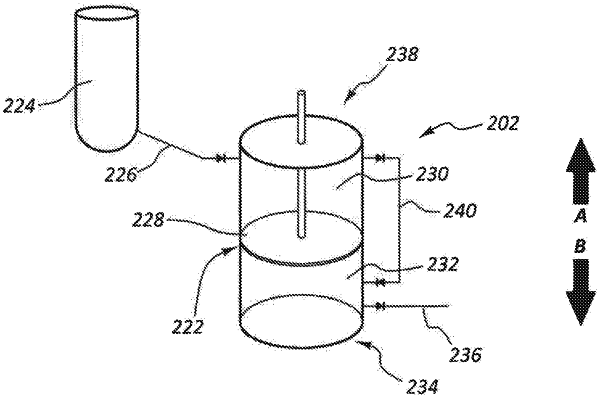| CPC A61F 2/80 (2013.01) [A61F 2/66 (2013.01); A61F 2/70 (2013.01); A61F 2002/6614 (2013.01); A61F 2002/802 (2013.01); A61F 2002/805 (2013.01); A61F 2002/807 (2013.01)] | 20 Claims |

|
1. A weight activated vacuum pump for a prosthetic device, comprising:
a hollow elongate structure;
a piston positioned within the hollow elongate structure;
a first fluid pumping chamber positioned within the hollow elongate structure and arranged on a first side of the piston, the first fluid pumping chamber having a variable volume as the piston moves axially relative to a shaft;
a second fluid pumping chamber positioned within the hollow elongate structure and arranged on a second side of the piston opposite the first side, the second fluid pumping chamber having a variable volume as the piston moves axially relative to the shaft;
a first valve;
a second valve; and
a third valve;
wherein the first fluid pumping chamber is fluidly connectable to a socket of the prosthetic device through the first valve and fluidly connected to the second fluid pumping chamber through the second valve, and the second fluid pumping chamber is fluidly connected to atmosphere through the third valve, wherein at least one of the first valve, the second valve, or the third valve is positioned within the piston;
wherein moving the piston in a first axial direction draws air from the socket into the first fluid pumping chamber and expels air from the second fluid pumping chamber, and moving the piston in a second axial direction opposite the first axial direction forces air from the first fluid pumping chamber into the second fluid pumping chamber.
|